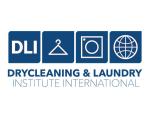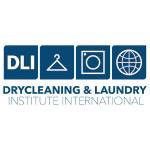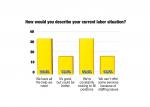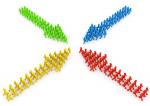LEHI, Utah — Modern challenges in business often have deep roots, and when it comes to motivating employees and recognizing good work and great results, today’s companies sometimes rely on outdated playbooks.
“The problems businesses experienced 100 years ago are often still the driving catalyst for today’s recognition efforts,” says Stephen Jolley, marketing leader at the employee engagement and recognition platform Motivosity. “This is especially true as our workforce is evolving and new generations enter.”
Jolley recently led “The Journey of Employee Recognition: From ‘Nice Job’ to Business Game-Changer,” a webinar hosted by the Society for Human Resource Management (SHRM).
For drycleaning business owners, this observation should hit home as they face a tight job market and increasing challenges in employee retention and engagement.
The History of Company Employee Recognition
Jolley believes the journey of employee recognition can be traced back to the Industrial Revolution in the 1880s when Frederick Taylor discovered at Midvale Steel Company workers performing identical tasks showed vastly different productivity levels — yet received the same pay.
“Taylor could see clearly that the lack of recognition for higher-performing workers was actually demotivating them,” Jolley says.
Taylor proposed a new payment system that used piecework, where workers could earn more for lifting and handling larger quantities of pig iron, and production increased dramatically.
“He understood that recognizing and rewarding employees based on their output could actually lead to higher overall productivity,” Jolley says.
The 1930s ushered in what Jolley calls “The Gold Watch Era,” when companies like Bendix Aviation and General Motors formalized recognition through “Employee of the Month” programs and service awards. These initiatives emerged during challenging economic times, he notes, much like today’s post-pandemic environment.
The 1950s and ’60s saw the emergence of the human relations movement, Jolley says, which emphasized the importance of social relationships and employee well-being in the workplace.
“Employers began to recognize that acknowledging employees’ achievements not only contributed to their sense of self-worth but also enhanced their overall fulfillment at work,” he says.
The 1990s and 2000s began the wave of what Jolley calls the “Corporate Culture” era.
“Productivity, retention, employee satisfaction — those all became core things to measure and respond to for an organization,” he says, noting that some of the standout companies were brands such as Google, Zappos and Netflix.
“They made significant strides to promote positive culture through open communication, the employee benefits they offered, and their focus on creativity,” Jolley says. “They did this by having open space where employees had a platform to ask questions directly to leadership and would have regular meetings where the company news was discussed. They’re also very notorious for their benefits.”
Yesterday’s Strategies and Today’s Workers
While these methods made the workers of their time feel valued, Jolley says that today’s employees often need something different.
“It’s important to note that many of these methods follow a top-down approach,” Jolley says, “so while they may have worked in the past, they’re increasingly becoming outdated. Employees are seeking recognition that feels personal and authentic rather than a ‘one-size-fits-all’ approach.”
He has found that traditional methods often fail to resonate with employees.
“I travel to multiple HR events and trainings a year,” Jolley says, “and as I’ve talked to HR leaders and executives, I get a common description of their efforts. It’s usually getting low adoption and lacks meaningful impact.”
Current statistics support this concern, he says:
- Almost one-third (32%) of employers identify “building community” as their biggest people-related frustration.
- U.S. employee engagement has fallen to its lowest level since 2013.
- Three-fifths of people are emotionally detached at work, with 19% reporting being “miserable.”
For drycleaning operations, where customer satisfaction directly depends on employee performance, these numbers should raise alarms.
“Your employees and your people are your greatest asset,” Jolley says. “Prioritizing recognition is essential for employee well-being, helps retention and drives productivity.”
The Cost of Nonrecognition
Jolley says that the impact of recognition on business performance is significant, offering statistics such as:
- Companies with recognition programs have 31% lower turnover rates.
- Eighty percent of employees say they would work harder if they felt more appreciated.
- Ninety-two percent of employees are more likely to repeat specific actions when recognized.
“Employees leave their jobs when they don’t feel connected to the business, when they don’t feel connected to their teams, or if they don’t feel connected to their managers,” Jolley says.
This can be particularly relevant for drycleaning businesses, where teams often work across different shifts or locations.
The U.S. Surgeon General’s recent declaration of loneliness as an epidemic adds urgency to this issue, Jolley says, who calls on businesses to prioritize workplace connections. As he points out, “Organizations that prioritize recognition see employees experience a greater sense of well-being and are less likely to face anxiety and stress in the workplace.”
For drycleaning businesses looking to thrive in today’s competitive market, understanding and implementing modern recognition practices isn’t just about keeping up with trends — it’s about creating a sustainable advantage in attracting and retaining quality employees who deliver exceptional service.
Come back Thursday for Part 2 of this series, where we’ll examine some common pitfalls when it comes to employee recognition.
Have a question or comment? E-mail our editor Dave Davis at [email protected].









































































